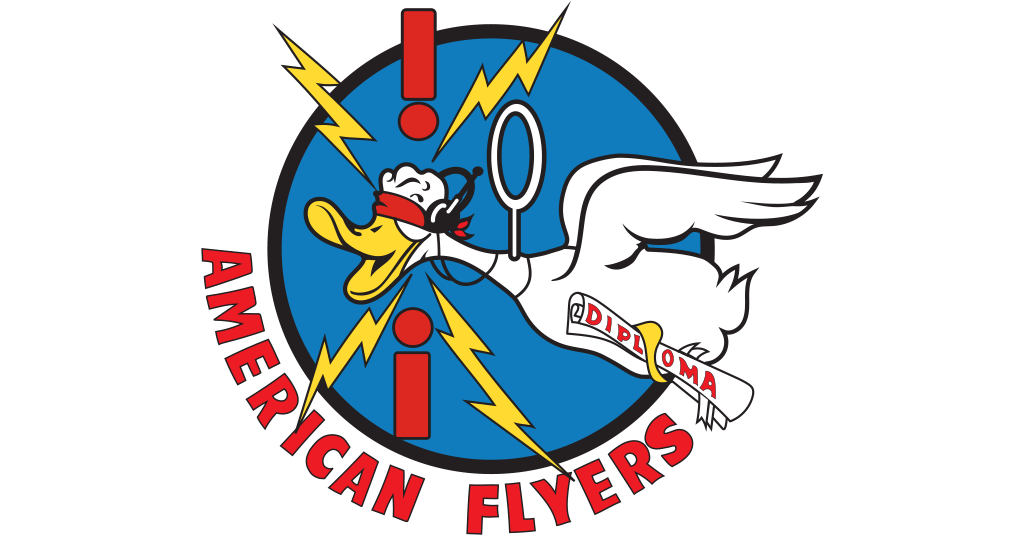By Dr. Michael Bliss
Chairman of the American Flyers National Safety Board
American Flyers has a wonderful history that goes all the way back to 1939. Over the years we have seen changes in the industry and even changes in our logo. You might ask, why was a blindfolded duck a part of our first logo? Dr. Michael Bliss, Chairman of the American Flyers’ National Safety Board, explains the intricate details behind our first company logo.
In the 1930s and 1940s, before there was GPS and VOR navigation, at the infancy of IFR flight, navigation was conducted using low-frequency radio ranges. These ground stations transmitted radio beams in four directions, in two sets of opposing legs. The beams were aligned to define an airway, an intersection, or an instrument approach course. There was no cockpit display to indicate where the airplane was in relation to those beams. The pilot himself had to be the indicator. He did so by listening to what he heard on the low-frequency radio. The four beams defined four quadrants sending a Morse code signal of either an A (dot-dash) or an N (dash-dot) in each of the quadrants. If the pilot was “on the beam,” the A and N Morse code signals merged to form a steady tone. If the aircraft wandered to one side or the other of the beam, the A or the N would become prominent and he would have to correct back toward the solid tone. The only way to determine if he was flying inbound or outbound to the station would be if the signal became stronger or weaker.
In 1939, American Flyers began training pilots to fly IFR, employing these low-frequency radio ranges. The American Flyer’s logo of that time depicted just such training. The duck in the logo is blindfolded, an indication of flying in the clouds, which was quite revolutionary in general aviation. Above his head is the letter N in Morse code and below his head is the letter A, indicating he is on the beam. The duck is wearing a headset so that he can hear the tones being generated, and the four electrical/lightning symbols represent the four beams that produce the quadrant codes. He is also outfitted with a loop antenna to receive non-directional radio beacons that were often used in conjunction with flying the LF range.
In our days of glass cockpits, with accurate depictions of the aircraft’s exact position, it is hard to imagine navigating “by ear.” It wasn’t for the timid. As we take our own place in aviation history, it is good to honor those who pioneered the way before us. American Flyers is proud of its heritage of leading the way in general aviation instrument training.










